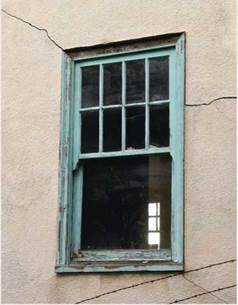Table of Contents
|
• • • |
|
Tools Tool Safety Tools to Own Tools to Rent |
|
34 |
|
CHAPTER 1: |
|
34
|
|
Estimating Project Difficulty and Costs 17 |
|
CHAPTER 4: |
|
CHAPTER 2: |
|
Creating a Home That Suits You 19 From Preliminary Designs |




 Inspecting
Inspecting
With a little practice, you can train your eye to see both a house’s potential and its pitfalls.

Every house f you know
where to look, you can see how skillfully the house was built or remodeled, how well it has weathered the elements, and how carefully the owners took care of it.
This chapter explains how to read a house’s history from sometimes subtle symptoms and then systematically figure out what caused them. So when inspecting houses, you need to observe closely and search for patterns, whether you’re a homeowner, a house shopper, or a renovation contractor.
► Inspecting your own home, you may be surprised to discover how many areas need attention, whether for safety, repair, updating, appearance, or preventive maintenance. Thus this inspection may guide your renovation.
► If you’re house shopping, your inspection may reveal conditions bad enough to dissuade you from buying. Or, if you decide to buy, those problems may give you leverage when negotiating price. Remember, most aspects of purchase agreements are negotiable.
► If you’re a remodeling contractor, this chapter will likely prove helpful in assessing systems you may be less familiar with, and subsequent chapters will specify techniques and materials that can make your renovation projects more time and cost effective.
Finally, think of this chapter as gateway to solutions throughout the book. Consequently, many of the house problems in this chapter are followed by page numbers or chapter numbers that direct you to further explanations or possible solutions. Note: Within this chapter and others, if you don’t find specific cross-references to topics you’d like to learn more about, consult the book’s index.







Leave a reply